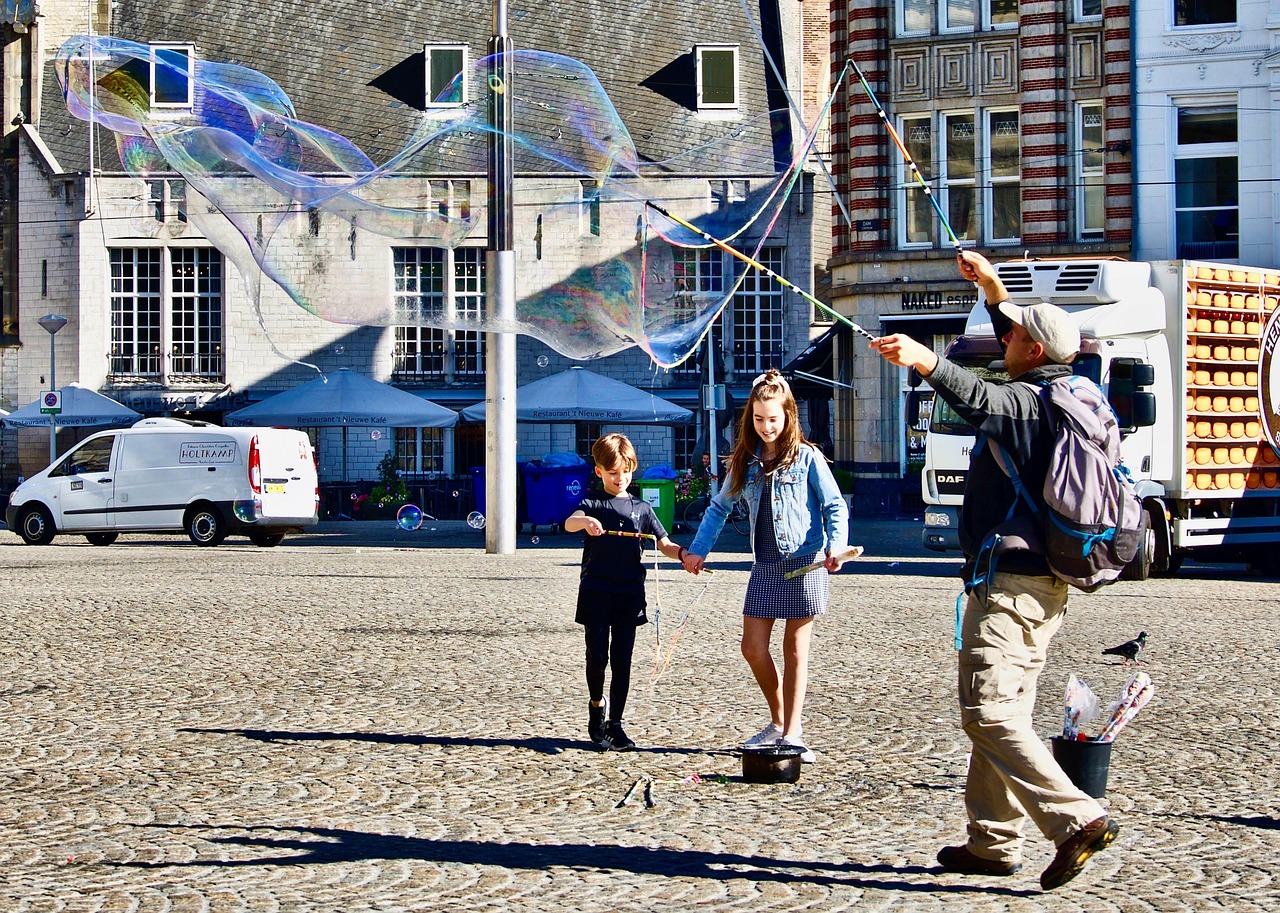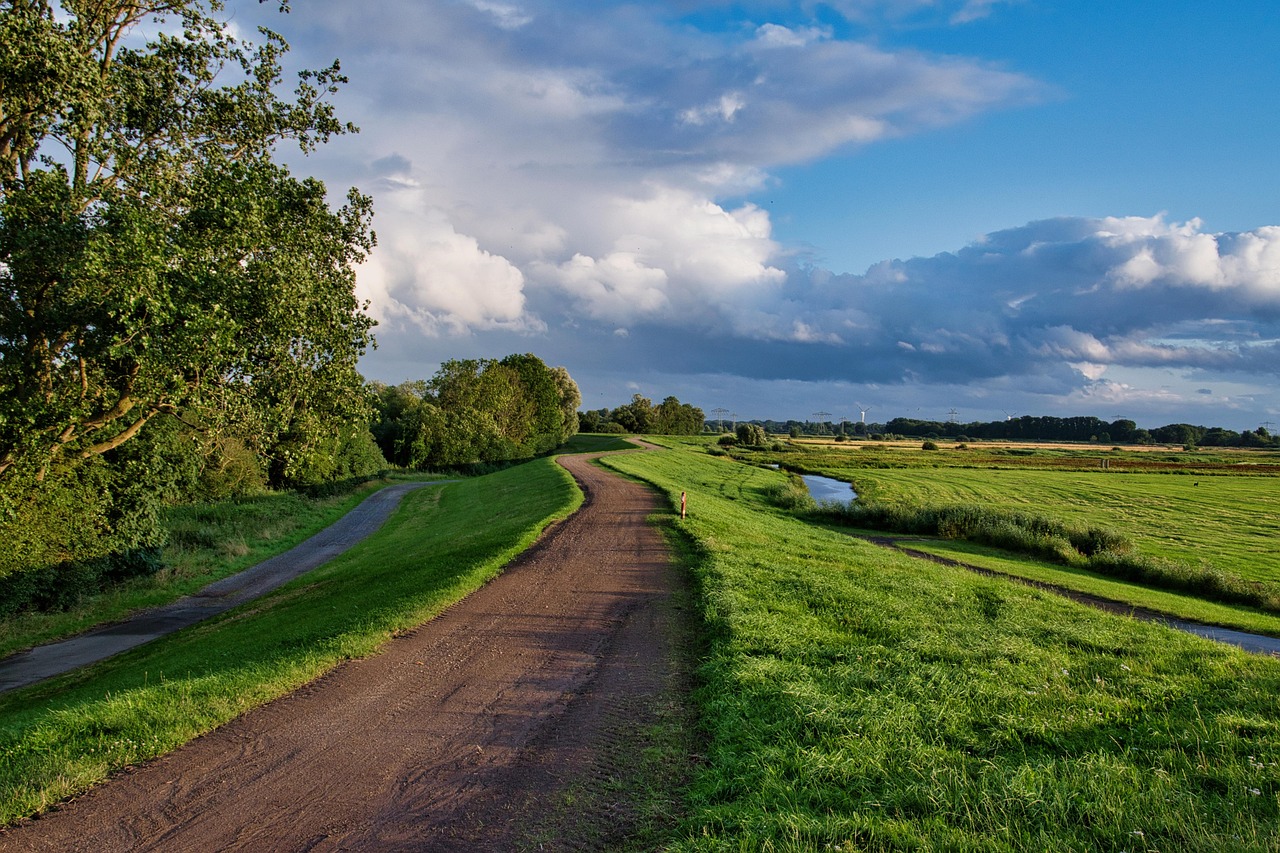Hidden Treasures: Uncovering New Jersey’s Forgotten Landmarks
Welcome to “Hidden Treasures: A Journey Through New Jersey’s Forgotten Landmarks,” where we embark on an exciting adventure to uncover the historical gems nestled within the Garden State. New Jersey, often overshadowed by its bustling neighbors, is a treasure trove of stories, sights, and sites that have quietly faded into the background, waiting for curious souls to rediscover them.
Have you ever stumbled upon a dilapidated building that spoke of a different time, or wandered through a forgotten town square that seemed to whisper tales of those who walked before? There’s an undeniable magic in uncovering these hidden landmarks—each one a fragment of history that adds depth to our understanding of the past. From the remnants of grand hotels that once hosted the elite to the ghostly echoes of industrial towns that shaped our nation’s economy, the allure of these sites lies in their ability to transport us back in time.
In a world where modern attractions dominate the spotlight, it’s easy to overlook the subtle beauty of these historical treasures. Yet, often just off the beaten path, you’ll find places rich with stories, character, and charm. The crumbling facades, the rusting machinery, and even the overgrown gardens all tell a story, inviting us to pause and reflect. Imagine the laughter that once filled a long-abandoned theater or the dreams that unfolded in an old train station—the possibilities for exploration are endless!
Join us on this journey as we delve into the lesser-known corners of New Jersey, shining a light on the forgotten landmarks that deserve a second glance. Together, let’s celebrate the hidden stories, the fascinating people, and the remarkable events that have shaped our great state. Whether you’re a lifelong resident or just passing through, you’ll find that these hidden gems are not only a feast for the eyes but also a balm for the soul, reminding us of the rich tapestry of history that surrounds us. So grab your walking shoes, your camera, and an adventurous spirit—an unforgettable exploration awaits!

The Secret Lives of the Pine Barrens
As we journey deeper into the Pine Barrens, a landscape cloaked in mystery and strewn with remnants of the past, we encounter the haunting beauty of abandoned towns and forgotten trails. This expansive region, spanning over a million acres, is not only a natural wonder but also a treasure chest of history, echoing the stories of those who once called it home.
One of the most evocative sites within this wilderness is the ghost town of Batsto Village. Established in the 18th century, Batsto served as a bustling bog iron and glass manufacturing site, thriving during the American Revolution. The village is marked by the stunning Batsto Mansion, a stately structure that stands as a testament to the area’s industrial success. Strolling through the dusty paths of Batsto, one can almost hear the clinking of glass bottles being shaped and the sounds of trade bustling in the marketplace. The restored buildings, with their weathered exteriors and creaking floorboards, invite visitors to imagine life in a vibrant community that once thrived amidst the whispers of the pine trees.
Not far from Batsto lies the abandoned town of Harrisville, a place that once flourished due to the textile industry. Founded in the 1800s, Harrisville was a small but industrious community, its inhabitants engaged in the production of woolen goods. Today, the remnants of its former glory linger in the form of crumbling factory walls and scattered foundations. The quiet of this once-bustling hub is palpable, punctuated only by the rustling leaves and the calls of distant birds. Walking the worn paths, one can envision the lives of the workers who toiled here, their dreams and aspirations woven into the fabric of the town’s history.
Venturing further into the Pine Barrens, the forgotten trails of the old Wharton State Forest guide us through a landscape that feels like stepping back in time. These trails, once trodden by the Lenape Native Americans and later by European settlers, reveal the deep-rooted connection between nature and humanity. Each bend in the trail unveils remnants of old mills and the foundations of homes, where families once gathered to share meals and memories. The enchanting flora and fauna provide a stunning backdrop, reminding us that while time may have weathered these structures, the spirit of the land remains vibrant and alive.
In the heart of this enchanting wilderness lies the enigmatic village of Ong’s Hat, a place steeped in folklore and mystery. Once a thriving settlement in the 18th century, Ong’s Hat has largely faded from the maps, its name often evoking tales of ghostly apparitions and strange happenings. The remnants of its homes and the long-abandoned general store stand as a testament to the life that once pulsed through its streets. As you explore the area, a sense of intrigue fills the air—what secrets might the trees and shadows of Ong’s Hat still hold?
The Pine Barrens are not just a backdrop for these stories; they are a living, breathing entity, steeped in the tales of those who came before. The quiet beauty of this region, with its sweeping landscapes and hidden landmarks, invites us to reflect on the passage of time and the enduring legacy of those who walked these paths. Each abandoned building, forgotten trail, and ghost town beckons with the promise of discovery, urging us to connect with the past and honor the stories that shaped New Jersey’s colonial history.
In this mystical landscape, the echoes of the past resonate loudly, reminding us that history is not merely a collection of dates and events but a tapestry woven from the lives and experiences of those who came before us. The Pine Barrens, with their hidden treasures, continue to capture the imagination and inspire a sense of wonder, inviting all who wander here to uncover the secrets that lie within their depths.

The Eerie Allure of the Red Bank Battlefield
The Red Bank Battlefield, nestled along the banks of the Delaware River in National Park, New Jersey, is a haunting reminder of the fierce struggles that defined the American Revolution. This site, once a strategic military outpost, played a pivotal role during the Battle of Red Bank in October 1777, a confrontation that saw American forces valiantly defending against the British and Hessian troops. The battlefield’s historical significance lies not only in its military actions but also in the stories of resilience, sacrifice, and patriotism that echo through its grounds.
As you stroll through the lush landscapes of the battlefield, you can almost feel the weight of history in the air. The ghosts of soldiers who once fought fiercely for their beliefs seem to linger, their spirits entwined with the whispering winds that rustle the trees. Many visitors have reported experiencing a chill or the sensation of being watched, lending an almost ethereal quality to this serene location. The eerie allure of the battlefield is accentuated by tales of apparitions—soldiers in period uniforms, glimpsed from the corner of one’s eye, or the distant sound of cannon fire, echoing in the silence of the present day.
The battlefield is home to the remnants of Fort Mercer, a crucial defensive position during the battle. Its earthen walls still stand, bearing silent witness to the valor and determination of those who fought to protect their land. Nearby, the tranquil waters of the river flow, yet beneath their surface lies the tumult of history—a poignant reminder of the lives lost and the dreams dashed amidst the chaos of war. Visitors are often struck by the juxtaposition of the serene landscape with the violent past it harbors, creating a haunting ambiance that captivates the imagination.
This site not only serves as a memorial to the fallen but also invites exploration and reflection. The stories of the brave men and women who lived through this tumultuous chapter of American history resonate deeply with those who choose to visit. As you walk along the pathways and gaze upon the historic markers, you can almost hear the echoes of their voices, urging us to remember their sacrifices and the ideals for which they fought.
Experiencing the Red Bank Battlefield firsthand allows you to connect with history in a profound way. Whether you’re drawn by the allure of its ghostly tales or the significance of its historical context, this hidden treasure stands ready to offer you a glimpse into the past—a past filled with courage, conflict, and the relentless pursuit of freedom. As you explore the battlefield’s storied grounds, prepare to be enveloped by the eerie yet captivating essence of a site that has witnessed both glory and grief, inviting you to discover the rich tapestry of history that lies within its embrace.
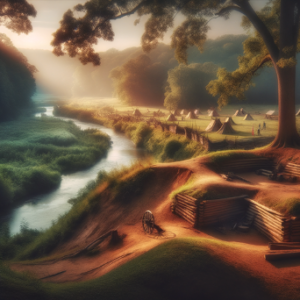
Lost in the Shadows
As we journey deeper into New Jersey’s forgotten landmarks, we find ourselves drawn to the winding path of the Morris Canal. Once a lifeline for the bustling industries of the 19th century, this canal played a pivotal role in shaping the economic landscape of the region. Constructed between 1825 and 1831, the Morris Canal stretched over 100 miles, connecting the Delaware River in the west to the Hudson River in the east. Its creation was a feat of engineering, featuring an impressive system of locks, inclined planes, and tunnels, allowing boats to navigate the challenging terrain of the New Jersey hills.
Imagine the scene during its heyday: boats laden with coal, iron, and other goods gliding smoothly along the water, their captains calling out to one another amid the clatter of machinery and the distant hum of factories. The canal was a vital artery for commerce, facilitating trade and transporting materials to burgeoning cities like Newark and Jersey City. It not only fueled the Industrial Revolution but also nurtured communities along its banks, where mills and factories sprang up, providing jobs and economic stability.
However, as the years rolled on and the nation transitioned into the 20th century, the Morris Canal began to fade into obscurity. The rise of the railroad, with its speed and efficiency, rendered the canal’s slow, winding route less competitive. By the 1920s, freight traffic had dwindled, and the waterway fell into disrepair. Anecdotes from the era tell of abandoned boats resting silently on the banks, overtaken by weeds and wildflowers, as families turned their backs on the once-thriving commerce that had defined their lives.
Today, the remnants of the Morris Canal are scattered across the landscape, each telling a story of a bygone era. The stone lock chambers, crumbling wharves, and rusted machinery stand as silent witnesses to the relentless passage of time. Nature has begun to reclaim the land, with trees and shrubs weaving through the remnants of human endeavor, creating a poignant juxtaposition of industry and nature.
As we wander along the path of the Morris Canal, we can almost hear the echoes of laughter and labor that once filled the air. The whispers of history beckon us to remember the dreams and determination that built this vital connection, urging us to reflect on the profound impact it had on New Jersey’s development. The Morris Canal may now be a shadow of its former self, but its legacy remains etched in the hearts of those who seek to uncover the forgotten stories of the past.
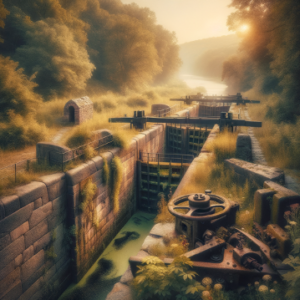
The Hidden Vaults of the New Jersey State Prison
The New Jersey State Prison in Trenton stands as a formidable testament to the complexities of the American penal system, a structure that has witnessed over a century of history, strife, and infamous personalities. Established in 1798, this sprawling edifice has housed a myriad of notorious inmates, each with their own story that weaves into the intricate tapestry of the state’s penal legacy.
Among its walls, one can find the echoes of the infamous New Jersey mobster, Vincent “Vinny” Atlantic. A figure of the underworld during the 1970s, his reign of terror was marked by his involvement in organized crime syndicates and violent turf wars. His elaborate schemes and ruthless demeanor earned him a lengthy sentence, but it was in the prison’s confines that he became a legend, orchestrating prison riots and even attempting a daring escape that would make for a thrilling chapter in any crime novel.
But it wasn’t just gangsters who found themselves incarcerated within these walls. The prison also housed political figures, such as activist Angela Davis, who, in the 1960s, became a focal point of political discourse. Her presence sparked debates about race, justice, and political repression, drawing attention to the plight of the marginalized and the failings of the criminal justice system. The conversations that reverberated through the prison corridors during her time there continue to resonate today, reminding us of the ongoing struggle for equality and justice.
The 1970s were not only defined by infamous inmates; they also marked a pivotal period of upheaval for the prison itself. The 1971 riot, one of the most significant events in its history, was triggered by the growing tensions between inmates and guards. It led to a gruesome standoff that left several dead and many injured. The aftermath forced a systemic re-evaluation of prison policies and conditions, shining a harsh light on overcrowding and inhumane treatment, echoing the broader movement for prison reform across the nation.
Decades later, the prison faced further scrutiny during the early 2000s when a series of investigations uncovered systemic issues of corruption and mismanagement. These revelations catalyzed public outcry and renewed calls for reform, bringing to light the complexity of rehabilitation versus punishment within the American justice system. The debates sparked by these events transformed into a national conversation about the very purpose of prisons, a discussion that remains relevant today.
The architectural design of the New Jersey State Prison itself is a character in this saga—its imposing Gothic structure, with dark stone walls and steel-barred windows, casts a shadow over Trenton. The prison’s design reflects a time when penitentiaries were built to instill fear rather than promote rehabilitation. Its very existence challenges us to confront the darker aspects of our society and consider the implications of our collective choices regarding crime and punishment.
As we peel back the layers of the New Jersey State Prison’s history, we discover more than just tales of notorious criminals and infamous events; we uncover a microcosm of societal values, struggles, and transformations. This landmark, with its hidden vaults of stories, stands as a reminder of the complex relationship between morality, justice, and humanity, urging us to reflect on our past while contemplating the future of justice in New Jersey and beyond.
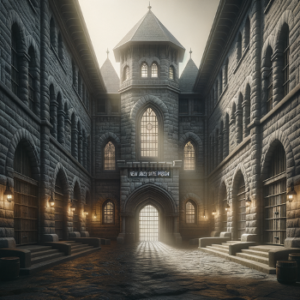
A Glimpse into the Past
Nestled within the heart of New Jersey lies Historic Smithville, a quaint 19th-century village that stands as a living testament to the charm of a time long past. With its cobblestone streets lined by meticulously restored buildings, each corner of Smithville invites visitors to step back in time and connect with the vibrant stories of its history.
As you wander through the village, you’ll be captivated by the intricate architecture that tells tales of craftsmanship and community spirit. The wooden facades, adorned with decorative trim and period-appropriate colors, evoke a sense of nostalgia for a simpler era. Stop by the historic gristmill, where the gentle sound of the waterwheel turning serves as a reminder of the village’s agricultural roots. Every building, from the old general store to the charming tavern, carries echoes of the past, whispering the stories of the families who once lived and worked here.
The significance of Smithville transcends its picturesque appearance. Established in the early 1800s, this village was a bustling hub of activity, serving as a vital crossroads for trade and travel. Today, the community continues to celebrate this rich heritage through festivals and events that harken back to the village’s origins. Strolling through during one of these gatherings, visitors can immerse themselves in the spirit of the 19th century, complete with traditional crafts, music, and local delicacies.
Exploring Historic Smithville is not merely a visual experience; it’s an invitation to engage with the narratives that shaped the village. Each step offers a chance to reflect on the lives of those who walked these same paths, from the early settlers to the artisans who crafted their livelihoods here. As you take in the sights and sounds, allow yourself to be transported to a time when life moved at a different pace, a time where community and connection were paramount.
So, whether you’re seeking a serene escape from the modern world or a deeper understanding of New Jersey’s historical tapestry, Historic Smithville awaits. Embrace the opportunity to discover this hidden gem, where the past is alive and vibrant, ready to inspire a new generation of explorers.

Forgotten Forts of Sandy Hook
As we wander through the windswept shores of Sandy Hook, the remnants of Fort Hancock rise like spectral sentinels against the backdrop of the Atlantic Ocean. Constructed in the late 19th century, this coastal fortification was part of the United States’ strategic response to the evolving nature of warfare and the burgeoning threats posed by naval powers. Built between 1890 and 1897, Fort Hancock was designed to protect New York Harbor from potential maritime assaults, its strategic location commanding a view over the gateway to one of the nation’s busiest ports.
Imagine the clang of metal as soldiers scurried about the fortification, their voices mingling with the sound of crashing waves and the distant calls of seabirds. The fort was equipped with powerful artillery, most notably the massive 12-inch disappearing guns, which could silently emerge from their concrete shelters to defend against incoming enemy vessels. These formidable weapons, a marvel of engineering for their time, symbolize the ingenuity and military foresight of an era that had witnessed the dawn of modern warfare.
As you explore the crumbling remnants of the fort, you can almost hear the whispers of history echoing through the brick walls. The barracks, now in various states of decay, once housed soldiers away from home, each room a microcosm of military life filled with camaraderie, discipline, and the looming presence of duty. The vast parade grounds, now overgrown with wild grasses and the occasional resilient flower, served as a stage for drills and ceremonies that marked the passage of time in the life of the fort and its inhabitants.
But Fort Hancock was not the only defender of Sandy Hook. As you venture further along the coast, you may stumble upon the skeletal remains of other forts, each a chapter in the narrative of America’s coastal defense. Fort Griffith, for example, stands as a poignant reminder of the Spanish-American War era, when it was erected to bolster the defenses of the New York Harbor. Though much of it has succumbed to nature’s encroachment, the remnants offer a glimpse into the past—a time when such structures were pivotal in safeguarding the nation’s interests.
The very ground beneath your feet tells stories of drills and the strategic planning sessions that unfolded within these walls. As the sun sets, casting a golden hue over the ruins, you might envision the silhouettes of soldiers standing guard, their resolute figures etched against the canvas of a fading sky. Each fort, whether crumbling or partially intact, serves as a testament to the resilience of those who once called these structures home and the critical role they played in national defense.
It’s a fascinating juxtaposition to witness the relentless power of nature reclaiming these military installations while contemplating the human stories woven into their very fabric. The forts of Sandy Hook, with their graffiti-laden walls and rusting artillery, stand as silent witnesses to a bygone era, inviting the curious explorer to reflect on the sacrifices made and the history forged within their confines.

The Mysterious Abandoned Amusement Parks
As we meander through the forgotten corridors of New Jersey, we inevitably stumble upon remnants of joy and laughter—abandoned amusement parks that once thrived in the summer sun. These sites, now cloaked in vines and whispers of the past, beckon us to explore their tales of excitement and thrill. Each park stands as a monument to an era when families flocked to experience the intoxicating allure of cotton candy, roller coasters, and carnival games.
Take, for instance, the faded grandeur of Cassian’s Amusement Park in the heart of the Pine Barrens. Once alive with the sounds of children’s laughter and the clattering of bumper cars, its rusting rides now stand still, overrun by nature. The carousel, with its chipped horses frozen in mid-gallop, invites the imagination to wander back to sun-soaked days filled with joy. What stories do these structures hold? Who were the families that embraced the thrill of the Tilt-A-Whirl, and what dreams danced in their hearts as they spun around?
Further north, we discover the remnants of the iconic Palisades Amusement Park, a true titan of entertainment in its time. Perched on the cliffs overlooking the Hudson River, this park was a beacon for thrill-seekers from near and far. Its towering rides cast long shadows on the water, while the delectable scents of fried dough and popcorn wafted through the air. Now, the land lies dormant, yet echoes of joyous screams seem to linger in the breeze. The vibrant history of Palisades serves as a reminder of the connections forged in shared excitement and the simple pleasures of a day spent at the fair.
Then there’s the haunting beauty of the historic Land of Make Believe, a whimsical park that once promised both adventure and fantasy. Even in its current state of neglect, one can almost hear the laughter of children engaging with clowns and characters that brought their imaginative worlds to life. The faded signs and scattered props tell stories of forgotten dreams, reminding us of the boundless creativity that flowed within these whimsical walls.
Each abandoned amusement park reveals a tapestry woven with the threads of nostalgia—threads that bind us to our childhoods. They stand as silent witnesses to the passage of time, a testament to the fleeting nature of joy, and evoke a yearning for the simplicity of yesteryear. As we explore these forgotten realms, we are reminded of the enchanting moments they provided and the cherished memories that linger, waiting to be revived in our hearts.
In this exploration of New Jersey’s lost amusement parks, we not only uncover the remnants of rides and attractions but also the stories of the people who once filled these spaces with life. Through their histories, we find a deeper understanding of our own connections to joy, adventure, and the bittersweet passage of time. So let us journey on, with open hearts and curious minds, to rediscover the thrill of the past in these abandoned playgrounds of nostalgia.

The Vanished Village of Batsto
As we journey deeper into New Jersey’s rich tapestry of history, we arrive at the Vanished Village of Batsto, a remarkable site nestled within the lush confines of Wharton State Forest. This once-thriving community emerged in the 18th century as a beacon of innovation and industry, renowned for its glass-making prowess. Established around 1766 by the ironmaster Joseph Wharton, Batsto quickly became a hub for the production of high-quality glass, a crucial commodity at the time. The village flourished, attracting skilled artisans and laborers who contributed to its burgeoning economy.
Over the next few decades, Batsto witnessed a remarkable transformation, with the construction of homes, a general store, and even a gristmill, which catered to the needs of its growing population. The picturesque village, framed by scenic landscapes and the gentle flow of the Batsto River, became a vibrant community where families prospered and traditions thrived. However, like many industrial towns of its era, Batsto’s fortunes waned as the glass industry faced fierce competition and evolving technologies. By the late 19th century, the village fell into decline, ultimately becoming a ghost town as residents fled in search of better opportunities elsewhere.
Despite its abandonment, Batsto Village has not been forgotten. In the latter half of the 20th century, a concerted effort was made to preserve its historical significance. Today, the village is meticulously maintained by the New Jersey Division of Parks and Forestry, ensuring that the remnants of its rich past are safeguarded for future generations. Restoration projects have revitalized its historic buildings, including the Batsto Mansion, which stands as a testament to the architectural styles of the time.
Visitors to Batsto Village can now wander through this enchanting landscape, exploring its well-preserved structures and enjoying the serene natural beauty that surrounds it. Scenic walking trails meander alongside the river, offering glimpses of wildlife and opportunities for reflection amidst the whispers of the past. The village hosts various events throughout the year, such as craft fairs and historical reenactments, further enriching the experience for those who seek to connect with its vibrant history.
As you explore Batsto, take a moment to appreciate the stories embedded in the very soil beneath your feet. Each step through this vanished village invites you to imagine the artisans who once crafted exquisite glass and the families who called this place home. Batsto Village serves as a powerful reminder of New Jersey’s industrial legacy, encapsulating the spirit of resilience and innovation that defined its era.

Enigmatic Sites of Culture
Tucked away in the heart of Paulsboro lies the Paulsboro Cultural Center, a beacon of artistic revival nestled within the charming confines of a historical building that once reverberated with the lively laughter of a bustling community. This architectural gem, with its weathered bricks and stately facade, tells a story of resilience and rebirth, echoing the spirit of the town that cradles it. Originally constructed as a schoolhouse in the late 19th century, the structure has transformed over the decades, evolving into a sanctuary for local arts and heritage, a space where the echoes of the past converge with the vibrant expressions of the present.
As you step inside, the air is imbued with the palpable energy of creativity, a stark contrast to the stillness that once filled the classrooms. The scent of fresh paint mingles with the faint mustiness of history, creating a canvas for the imagination. Walls adorned with local art tell tales of forgotten artists, while handcrafted installations celebrate the indigenous crafts that flourished in this region. Each piece is a testament to the passionate individuals who have poured their hearts into preserving the cultural fabric of Paulsboro, bringing life to what was once a quiet storyline waiting to be told.
The Cultural Center hosts a plethora of events that breathe life into the community. Picture this: the soft glow of fairy lights twinkling above the outdoor courtyard, where local musicians strum their guitars, filling the air with melodies that resonate with nostalgia. Young artists gather for workshops, their laughter mingling with the music, each stroke of paint on canvas igniting a spark of creativity. Seasonal festivals transform the center into a vibrant marketplace, where artisans display their crafts, and the aroma of homemade delicacies wafts through the air—each bite a flavor of the town’s rich history.
Yet, the magic of the Paulsboro Cultural Center is not merely in its events but in the stories shared and bonds forged within its walls. It’s a place where generations collide; grandparents recount their childhoods to wide-eyed children, weaving tales of a time when the town thrived—when factories buzzed with activity and community halls overflowed with laughter. The center serves as a bridge connecting past and present, reminding all who enter that culture is not static but a living, breathing entity that flourishes through shared experiences.
Underneath the roof of the Cultural Center, forgotten art forms resurface, and local heritage is celebrated in ways that honor the town’s history while inspiring future generations. It is here that the stories of Paulsboro are rewritten, not in the pages of dusty books, but through the vivid expressions of those who cherish their roots. The Paulsboro Cultural Center stands as a testament that in the heart of every community lies a pulse of creativity, waiting to be rediscovered and celebrated, ensuring that the whispers of the past continue to resonate long into the future.

The Ghost Town of Changewater
Nestled amid the rolling hills of rural New Jersey lies the ghost town of Changewater, once a bustling railway hub that played an essential role in the transportation of goods and people during the late 19th and early 20th centuries. The echoes of steam engines and the rhythmic clatter of wheels on tracks have long faded, yet the remnants of a vibrant community still linger.
Changewater was more than just a waypoint on a map; it was a thriving hub that united farmers, merchants, and travelers. At its peak, the town boasted a series of shops, a post office, and a lively saloon where locals gathered to unwind after long days of labor. Children filled the streets with laughter, running to catch the evening train that brought visitors and news from distant towns. The air was thick with the scent of fresh bread from the local bakery and the sounds of hammers striking nails as houses were built to accommodate the growing population.
Among its inhabitants was the Johnson family, who ran the general store. Their son, Tommy, was known for his adventurous spirit, often leading neighborhood kids on quests through the nearby woods. They’d imagine themselves as explorers in uncharted territory, their laughter ringing through the trees. The Johnsons’ store became a second home for many, a place where stories were shared, and friendships were forged, all while the trains rumbled past, a constant reminder of the world beyond their little town.
As the years passed, the landscape of transportation began to change. The rise of the automobile and the decline of rail travel led to the slow but inevitable decline of Changewater. The trains that once brought life to the town now passed by in silence, and the vibrant community began to dwindle. Families moved away in search of opportunities that Changewater could no longer offer, leaving behind empty storefronts and crumbling homes.
Today, remnants of this once-thriving town can still be found, inviting curiosity and reflection. The old railway tracks, now overgrown with weeds, hint at the stories of those who once traveled this route. The skeletons of buildings stand resolute against the passage of time, their weathered facades whispering tales of yesteryear. A few scattered artifacts—a rusted sign, a faded photograph—offer glimpses into the lives of the people who called Changewater home.
As you stroll through this ghost town, you can almost imagine the bustling marketplace on a Saturday afternoon, the sounds of children playing, and the warmth of community gatherings. Each step is a walk through history, a chance to breathe life into the memories of Changewater’s past. In this quiet place, where nature has begun to reclaim its territory, the spirit of the town endures, inviting those who wander its remnants to discover the rich tapestry of stories woven into the very ground beneath their feet.
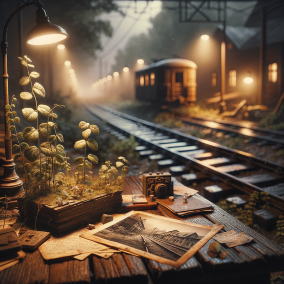
Relics of the Past
Nestled along the picturesque shores of Long Beach Island, the Whale Boat House stands as a testament to New Jersey’s vibrant maritime culture and the whaling industry that once thrived in these waters. With its weathered beams and salt-kissed shingles, this historic structure tells the tale of a time when the ocean was not just a backdrop for leisure but a vital resource that sustained entire communities.
The Whale Boat House, built in the late 19th century, served as a hub for whalers, a place where skilled hands crafted and maintained the boats that ventured into the deep blue. Picture the scene: fishermen hauling heavy nets, their laughter mingling with the cries of gulls overhead, and the rhythmic sound of waves crashing against the shore. The salt air is thick with the scent of brine, and the horizon stretches endlessly, beckoning adventurers to set sail.
As whaling began to wane in the early 20th century, the Whale Boat House fell into disrepair, barely clinging to its place in history. Yet, thanks to the dedication of local historians and preservationists, efforts have surged to restore this beloved landmark. The restoration process, akin to bringing a ship back to life, has involved painstaking renovations that respect the original craftsmanship while ensuring the structure is safe and accessible for future generations.
Today, the Whale Boat House stands proud, a beacon of maritime heritage, inviting visitors to step back in time. Imagine strolling along the docks, where the sun glints off the water’s surface, and the sound of laughter echoes from children learning the ropes of boating under the watchful eye of seasoned mariners. The air buzzes with excitement, as families gather to hear tales of daring sea voyages and the ecological importance of preserving our oceans.
Through educational programs and community events, the Whale Boat House continues to serve its purpose as a gathering place, fostering a love for maritime culture while instilling a sense of responsibility toward our natural resources. As you wander through its restored halls, the walls seem to whisper the stories of those who once depended on the sea for their livelihood, ensuring that the legacy of whaling will not be forgotten.
The Whale Boat House is more than just a relic; it is a bridge between past and future, reminding us of the sea’s profound role in shaping our identities. As we work to preserve such historical landmarks, we not only honor the stories of yesteryear but also inspire the generations to come to cherish and protect the beauty of our coastal heritage.

The Legacy of the Old Stone Church in Westfield
Nestled amid the vibrant community of Westfield, the Old Stone Church stands as a remarkable testament to the passage of time, echoing the hopes, dreams, and resilience of generations. Constructed in the early 19th century, the church boasts a distinctive architectural beauty characterized by its sturdy stone façade, soaring spires, and intricate stained glass windows. Each feature tells a story—of the artisans who crafted it, of the congregants who gathered within its walls, and of the community that has cherishingly preserved it.
As you approach the Old Stone Church, it’s impossible not to feel the weight of history wrapped in its embrace. Its sturdy structure has weathered the elements and the trials of time, becoming a beloved landmark that anchors the identity of Westfield. The church has not only served as a place of worship but also as a gathering space for community events, celebrations, and moments of sorrow. Its sanctuary has cradled weddings, christenings, and memorial services, each occasion etching deep, personal connections into the fabric of the community’s collective memory.
The enduring legacy of the Old Stone Church is reflected not just in its architectural splendor but in the stories it continues to inspire. Local residents fondly recall the annual holiday services, the candlelight vigils, and the summer picnics on its grounds, where laughter and fellowship flourished under the shade of ancient trees. These shared memories bind the community together, serving as a reminder of the church’s integral role in their lives.
In recent years, ongoing efforts to maintain and restore the Old Stone Church have taken center stage, highlighting the community’s commitment to preserving this cherished landmark. Fundraising initiatives, volunteer restoration projects, and educational programs aimed at promoting awareness about the church’s history have breathed new life into its walls. Local historians and conservationists work tirelessly to ensure that future generations will continue to enjoy the beauty and significance of this architectural gem.
As the Old Stone Church continues to stand proud within Westfield, it remains not just a monument of the past, but a vibrant part of the community’s present and future. Its enduring legacy serves as a reminder of the strength found in unity, the importance of remembering our roots, and the beauty of preserving our shared history. The church is a living testament to the power of community, and its presence will surely inspire stories yet to be told.

Forgotten Glory
Amidst the serene landscapes of New Jersey lie remnants of a tumultuous past, echoing the struggles and triumphs of the Civil War era. As we navigate through these hallowed grounds, we encounter the silent sentinels of history: monuments and battlefields that silently bear witness to the sacrifices of those who fought for their beliefs.
One such site is the Monmouth Battlefield State Park, where the air still hums with the echoes of cannon fire and the cries of soldiers. This expansive park, once the stage for one of the largest battles of the American Revolution, also holds the stories of those who served in the Civil War. The battlefield, now a tranquil landscape of rolling hills and shaded groves, invites visitors to reflect upon the valor and hardship faced by the soldiers who fought for their cause, be it Union or Confederate. Standing at the site of the original skirmishes, one can almost feel the ground tremble beneath the weight of history.
In the heart of Trenton, the New Jersey State House stands as another powerful reminder of the era. As the birthplace of the New Jersey Brigade that fought valiantly in various campaigns, this historic building resonates with the hopes of those who gathered within its walls to strategize and inspire. The grandeur of its architecture belies the fervent debates and decisions that once echoed through its chambers, shaping the state’s role in the larger conflict. The walls seem to whisper stories of camaraderie and sacrifice, urging us to remember the unity that was sought amidst division.
Further along, the monuments scattered throughout the state, like the New Jersey Civil War Memorial at Phillipsburg, serve as solemn tributes to the fallen. Here, etched in stone are the names of the brave souls who answered the call of duty. Each name tells a story, a personal connection to families left behind and dreams unfulfilled. Standing before these memorials, one cannot help but be moved by the weight of loss and the enduring legacy of those who endured the horrors of war.
Even the lesser-known sites, such as the Old Barracks Museum in Trenton, evoke a profound sense of nostalgia. Once a military hospital for the Union Army, this building now houses artifacts and exhibitions that bring to life the experiences of soldiers and civilians alike. Walking through its halls, it’s easy to imagine the weary faces of soldiers recuperating from wounds, sharing tales of bravery and loss, and the profound impact those experiences had on their lives.
Each of these sites, from expansive battlefields to intimate memorials, invites us to connect emotionally with the past. They remind us that history is not merely a collection of dates and events but a living narrative filled with human experiences, resilience, and the quest for freedom. As we explore New Jersey’s Civil War-era landmarks, we are not just rediscovering forgotten glory; we are paying homage to the sacrifices made and the stories that continue to shape our understanding of what it means to fight for one’s beliefs.

The Lost Treasures of Paterson’s Great Falls
One of the most powerful symbols of America’s industrial revolution can be found at Paterson’s Great Falls, a majestic waterfall that once served as the lifeblood of an industrial powerhouse. Nestled among the cobblestone streets and remnants of factories, the Great Falls of the Passaic River has long been a source of inspiration and innovation, transforming the landscape of a burgeoning nation.
In the early 19th century, the Great Falls became the centerpiece of Paterson’s ambitious plan to harness water power for manufacturing. Recognizing the potential of this natural resource, visionary leaders like Alexander Hamilton established the Paterson Silk Manufacturing Company, revolutionizing the textile industry. The roar of the falls provided the energy needed to drive the looms and machinery that produced silk goods, setting Paterson on a path to becoming America’s silk city.
As the falls cascaded down, they attracted a wave of industries eager to capitalize on the water’s might. From textile mills to machine shops, the area buzzed with activity and opportunity, creating jobs and fostering a diverse community of immigrants and entrepreneurs. The factories that lined the riverbank were more than mere buildings; they were the very embodiment of progress and ingenuity, giving rise to innovations in manufacturing, engineering, and labor practices.
The Great Falls, with its breathtaking beauty and formidable power, not only powered industry but also inspired artists and writers who sought to capture its essence. The site became a focal point for the Romantic movement, as poets and painters found muse in the dramatic landscape, forever linking the natural wonder to the spirit of American ambition.
Yet, as the industrial landscape evolved and other regions grew, the Great Falls and its surrounding treasures began to fade from view. Today, however, the site stands as a testament to the resilience of both nature and industry, inviting visitors to witness the legacy of a time when innovation and determination shaped the future of a nation.
As you explore the area, take a moment to absorb the magnificence of the falls and reflect on the remarkable stories etched into the very fabric of Paterson. The echoes of industry still resonate in the air, a reminder of the community’s vibrant past and its role in America’s rise as an industrial giant. Discover the beauty and power of this hidden treasure, and let it inspire you to appreciate the history and heritage that surround us.
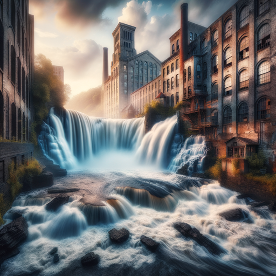
The Repair and Renovation of the Old Cedar Bridge
The Repair and Renovation of the Old Cedar Bridge: Conclude by discussing the challenges and triumphs in preserving the historic Cedar Bridge, a notable landmark in New Jersey that faces the test of time. Highlight compelling stories of local efforts and the commitment to keep such landmarks alive for future visitors, all while bringing the narrative full circle.
As we explore the Cedar Bridge, it becomes evident that the journey of preservation is not without its hurdles. Erected in the 1850s, this iconic structure has weathered the elements and the passage of time, its wooden beams creaking under the weight of history. Over the years, it has faced deterioration from harsh weather conditions, neglect, and the encroachment of modern infrastructure. The challenge of maintaining such a historic site lies not only in physical repairs but also in garnering the support and funding necessary to ensure its survival.
Yet, amidst the difficulties, there are triumphs that shine brightly. Local community members, passionate about their heritage, have rallied around the Cedar Bridge, forming volunteer groups dedicated to its restoration. Fundraising events, educational workshops, and social media campaigns have brought attention to the importance of preserving this landmark, turning it into a symbol of collective pride and resilience. One particularly moving story involves a group of high school students who, as part of a community service project, took it upon themselves to clean the area surrounding the bridge, planting flowers and creating informational plaques that tell its story to visitors.
These acts of love and dedication reflect a broader commitment from the community to keep the Cedar Bridge alive for future generations. Local historians and preservationists have worked tirelessly, collaborating with state officials to secure grants and resources needed for extensive renovations. Their efforts underscore a profound understanding that such landmarks are not merely relics of the past but crucial components of our cultural identity. The bridge, with its weathered timber and picturesque surroundings, serves as a reminder of the stories that shaped New Jersey and the people who walked its path.
As we conclude our journey through the forgotten landmarks of New Jersey, the Cedar Bridge stands as a testament to the power of community engagement and the significance of preserving history. Its story is a microcosm of a larger narrative—a celebration of resilience, determination, and the unwavering belief that our past should be cherished and shared. The bridge invites visitors to pause, reflect, and embrace the echoes of history that still resonate today, ensuring that future generations will continue to discover and appreciate the hidden treasures that lie within the Garden State.
news via inbox
Stay Connected



